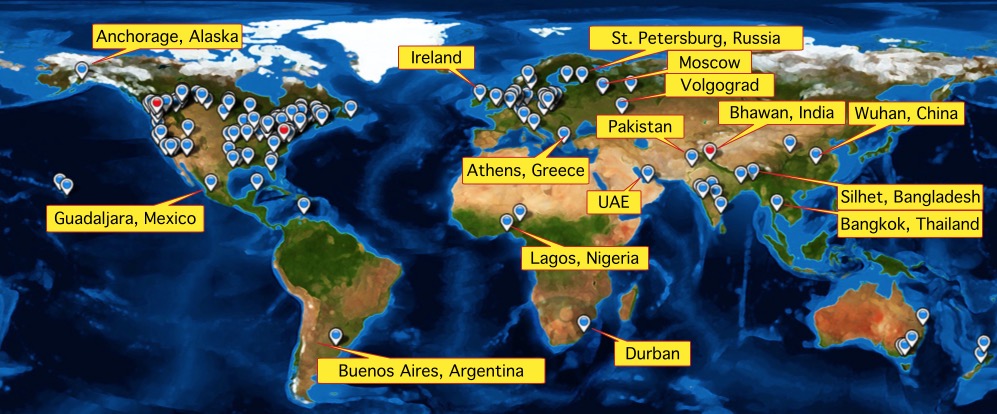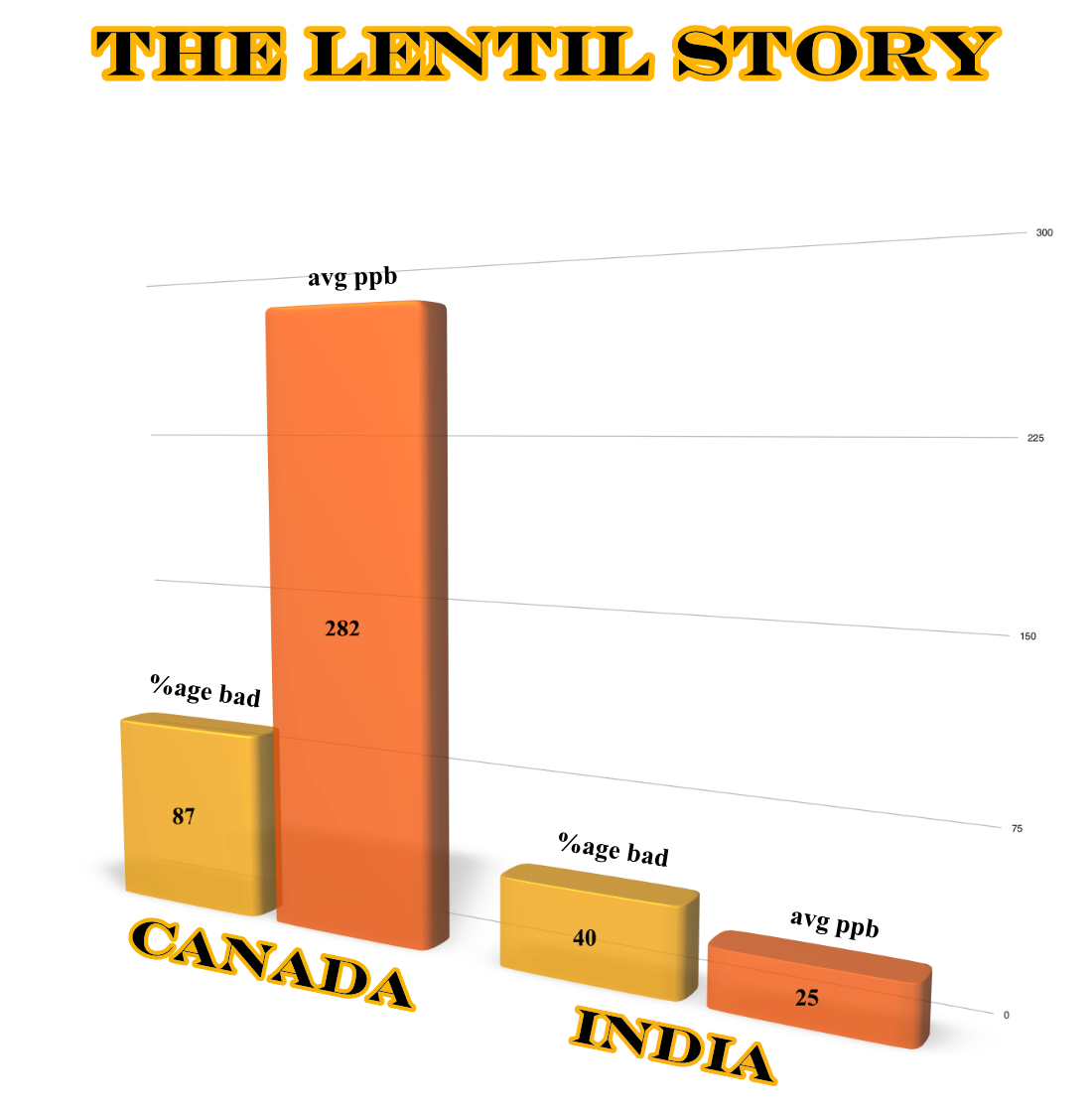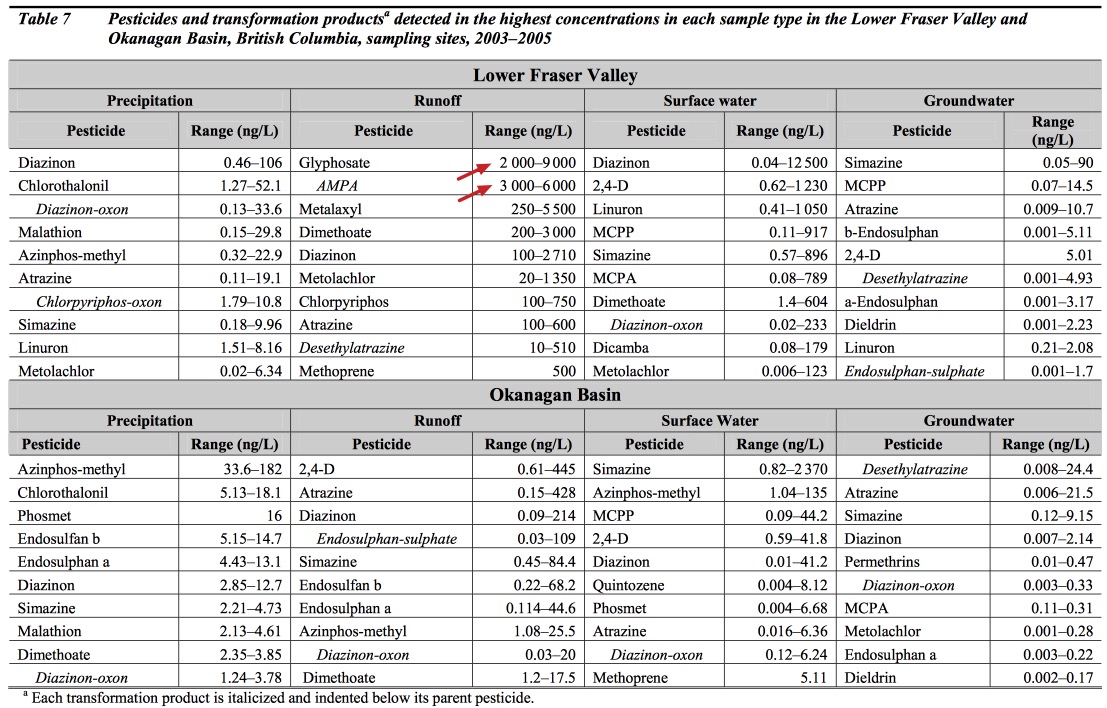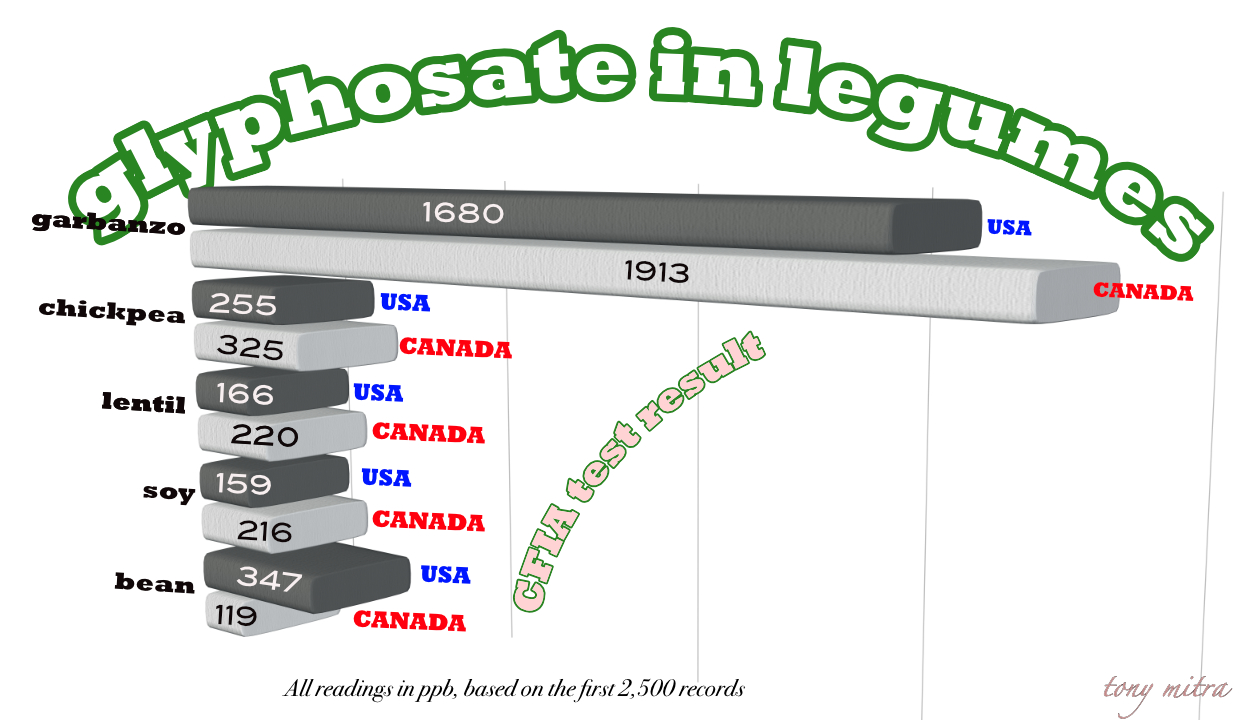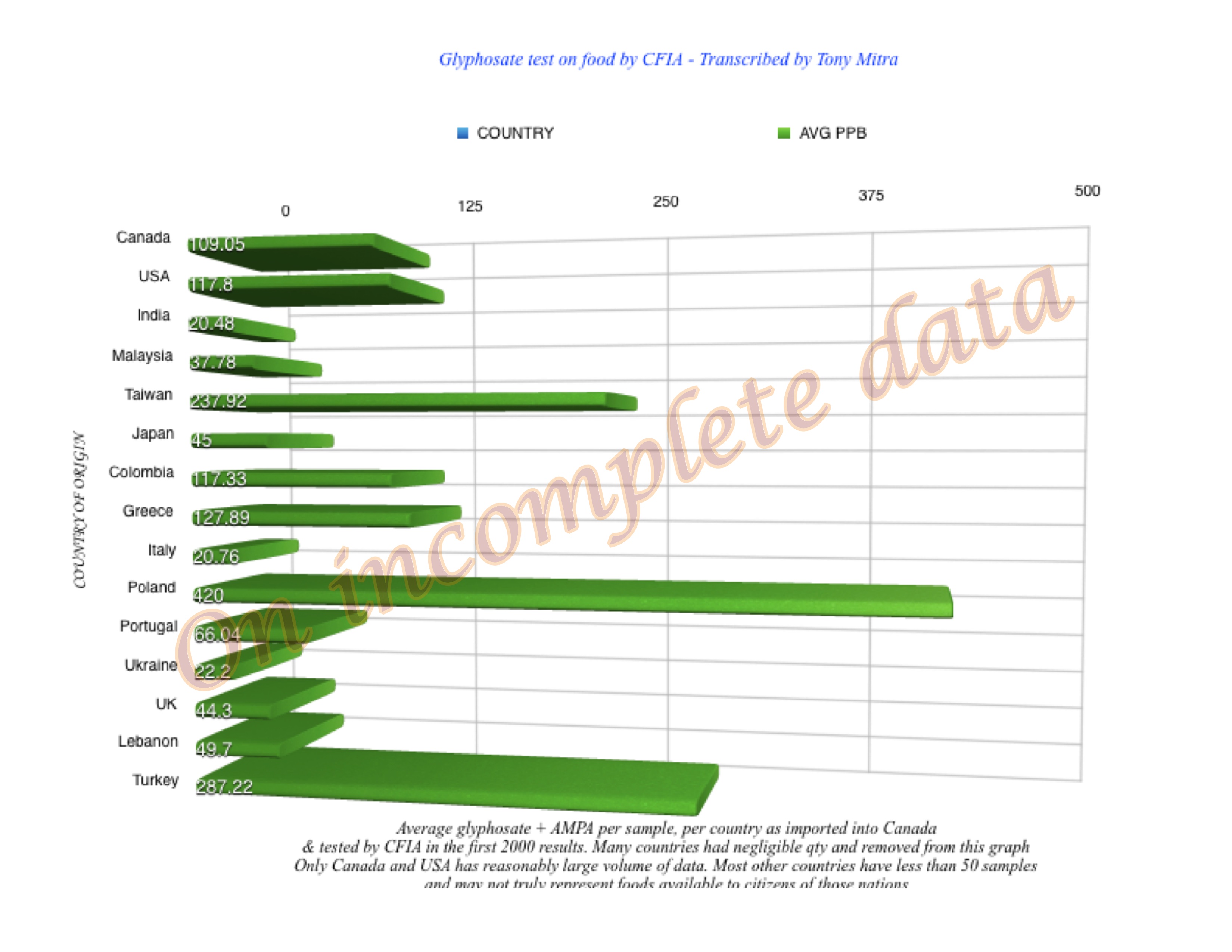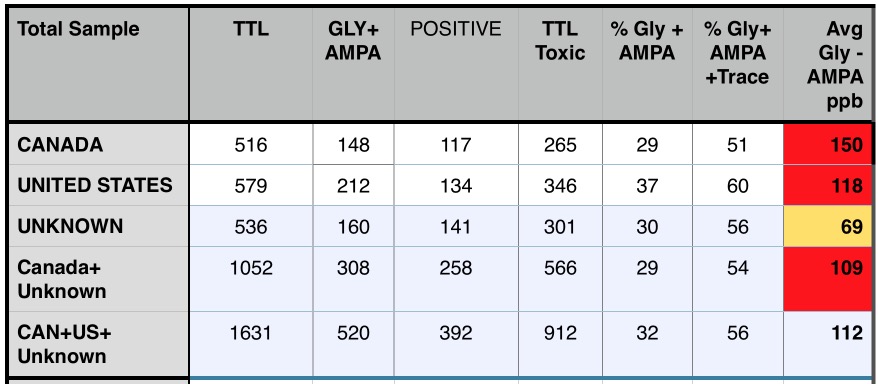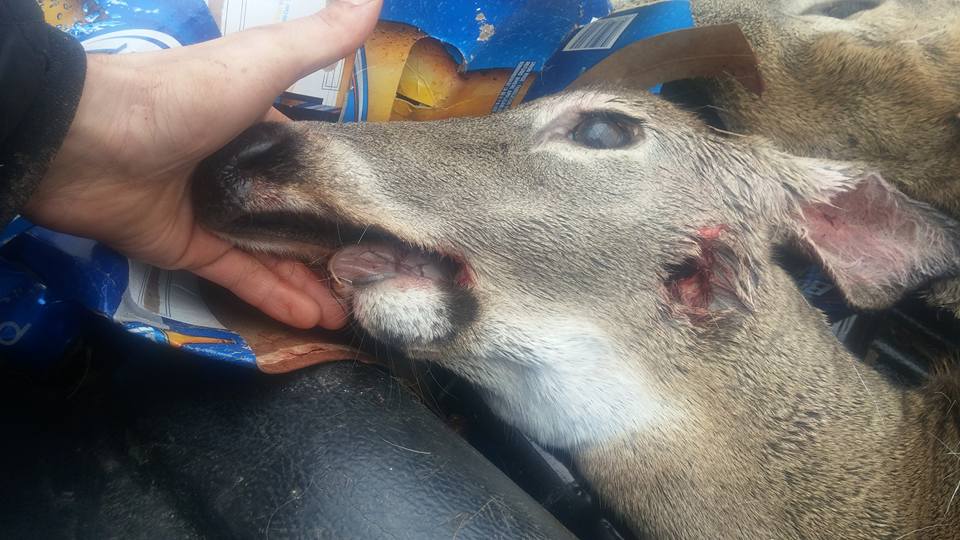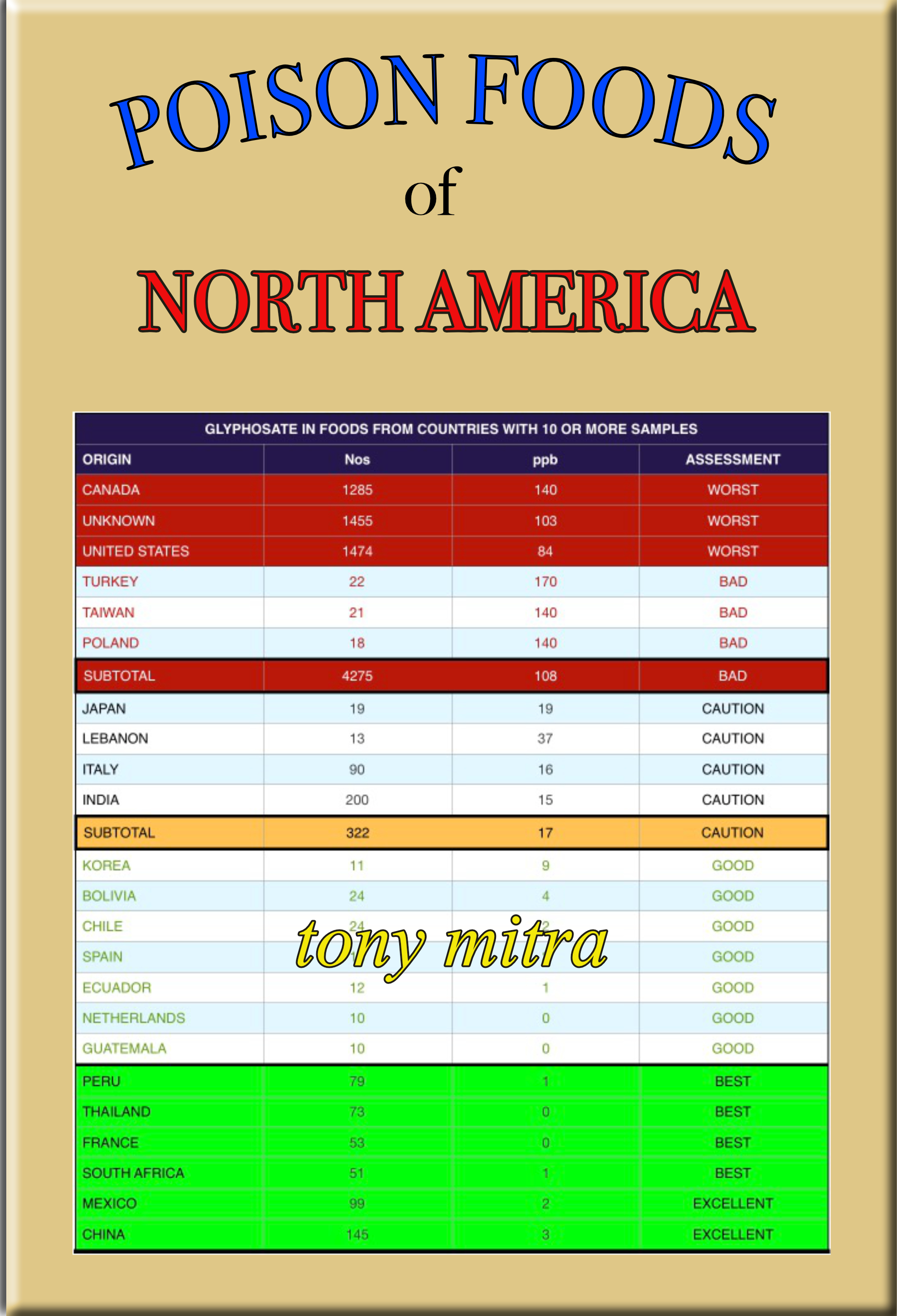A shocking revelation
I found the glyphosate in wheat bran, as tested by CFIA, is a shocking story that deserves a section of its own. By “American” in the title, I meant north American which includes Canada. Mexico is out of this comment because Mexico makes so clean foods, as CFIA records show, that it does not belong in the Canada-USA grouping of America.
For the first 3,000 or so records from the CFIA, there was no wheat or wheat byproducts such as flour or bread. This was causing me both frustration and alarm, since most of us were very aware that conventional wheat was being desiccated by glyphosate (RoundUp herbicide) just before harvest.
Bran, according to Wikipedia, is also known as miller’s bran, is the hard outer layers of cereal grain. It consists of the combined aleurone and pericarp. Therefore, wheat bran is essentially the outer hard layer of wheat kernel.
When wheat is processed to produce flour, this layer becomes a byproduct, and is called bran. In the case of processing wheat to make wheat flour, one gets miller’s or wheat bran. It is supposed to be packed with nutrition, and may offer many dietary benefits.
Wheat bran is commonly found in certain cereals, like Raisin Bran or Bran Flakes, as well as bran muffins, which rose to popularity in the 1980s. Wheat bran is beneficial toward providing digestive regularity and ending constipation because it is very high in dietary fiber. Some also claim that foods containing bran provide a feeling of fullness. This claim may be true, since it tends to absorb water and expand in the digestive system.
The nutritional benefits of wheat bran are perhaps undisputed. For a time, it was even being touted that it might fight cancer. However, a cup (58 g) of wheat bran does offer significant nutritional pluses. One cup of this product in milk was supposed to contain 99% of the US recommended daily allowance (RDA) of fibre, nine grams of protein, and 34% of the RDA for iron. It was also known to be somewhat high in protein, various minerals and vitamin B6, also low in fat, with little cholesterol, or sugar. A magic food.
Wheat Bran is not a safe food! Not any more.
What happened in North America in the recent years, may have a very far reaching and devastating effect on tis product, by way of massive glyphosate contamination.This has likely not yet fully filtered down to the population, nor its implication sufficiently understood.
Why wheat product was not being tested in the first year of CFIA’s drive to test a wide spectrum of foods available to Canadians is a question only CFIA and the Government of Canada can answer. However, I am happy to find wheat beginning to appear in small samples tested in the second year of CFIA’s efforts, from around the summer of 2016. And the results appear to be shocking.
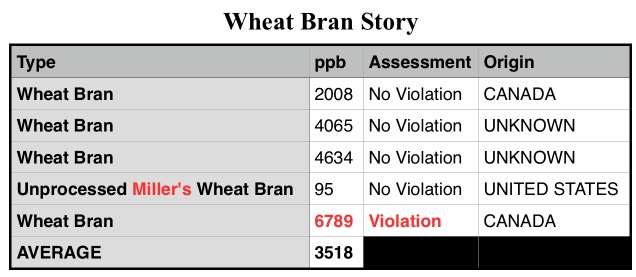
The table above refers. It has only a few of the most recent wheat bran items transcribed and not the entire lot. But all of them show bad readings and I shall be reporting on them all when I am done transcribing all the data. But these few figures are a good example of what the matter is with wheat in general and wheat bran in particular.
Most of these samples showed up with high measurable amounts of glyphosate and its first metabolite AMPA which is equally nasty. These two figures have been added up in this table to show a combined concentration of glyphosate and AMPA for each sample of wheat bran. Usually the readings show very high levels of glyphosate accompanied by a very small number for AMPA.
We know wheat is heavily desiccated with glyphosate. Now, I wonder if most that that glyphosate, applied just before harvesting, actually accumulates into the wheat bran? Could it be that wheat bran is the primary depository for glyphosate and AMPA? If that is true for wheat, could it also be true for all other grains that are desiccated with glyphosate and what have an identifiable “bran” ?
Guess I shall be looking for these answers elsewhere, to keep me busy.
Meanwhile the table above answers many questions and raises just as many more puzzles and questions. For example, there are wheat bran samples with over 4,000 ppb GLY+AMPA count that are of “unknown” origin. This “unknown” category has been a major irritant for me. I suspect that most of these unmarked food grains are of local (Canadian) grown or from USA. Since both USA and Canada try to protect their own agricultural produce from undue free competition from others, usually transportation of wheat across the border is not permitted by either country, since each of them produce the crop and want to protect its market. That is one reason I suspect most of the “unknown” foods are Canadian, unless the type is something that cannot not grow or is not cultivated in Canada.
Next, most of these samples with high glyphosate content is without any kind of identification mark, such as brand name of the product, or where it was grown or which store or farmer it was collected from. Therefore, it gets nearly impossible for an average consumer to figure out what to buy and what to avoid. This absence of clear identification of a potentially poisonous food item makes the entire class – i.e. wheat bran, a poison pill for me and I am going to avoid it like the plague.
This also proves that there is perhaps a need for grassroots people’s movement to get their local municipalities to start testing a few food items grown locally and sold in local stores, for glyphosate content, every month and making all results public, including brand names and source of the sample. Folks should insist, for example, that the first few food items their municipality tests in the first month should be wheat products such as wheat grains, wheat bran, and bread, that are available in local food stores, and make all results public. Those interested might check a related petition and effort at a movement on this front.
Then there is the question of allowable minimum residue limit (MRL) for glyphosate in wheat bran. From the above table, and going back to the raw data, it gets quite obvious that 4,610 ppb of glyphosate or 28 ppb AMPA is not a violation, but 6630 ppb of glyphosate and 159 ppb of AMPA is a violation. Therefore, the existing MRL lies between 4610 and 6630 ppb for glyphosate in wheat bran, and between 28 and 159 ppb of AMPA in wheat bran.
This observation raises even more questions. First, why is the MRL so low in AMPA and so high in glyphosate? Does the Government have proof that somehow glyphosate is a lot less harmful to us than its first degrading compound, AMPA? From what I hear, there is no evidence that glyphosate is a lot safer in comparison with AMPA and there may not be any provable justification for glyphosate’s MRL to be so much higher than AMPA’s.
Or could it be that the allowable MRL is neither specific to glyphosate nor to AMPA, but the total of both, as is actually shown on the above table? I need to find these answers.
As it is, Health Canada has till date not disclosed the safety test data and documents based on which it is supposed to have approved the use of Glyphosate in Canadian agriculture. My understanding of the law is that it may be illegal to release a product, such as glyphosate, for use in Canada, without disclosing its safety test report and raw data.
I have multiple petitions and ongoing struggles with the Canadian government, spanning two administrations, Harper’s and Trudeau’s, for Health Canada to make public all safety test records and data based on which it approved glyphosate’s use. The government does not deny one’s right to see such document, and yet keep dragging its feet on it. It has been dragging feet for thirty years and counting.
Petition 1
Petition 2 : e-413
Meanwhile, multiple “Access To Information” appeals to various wings of the government for disclosure or records of our foods tested for glyphosate has finally resulted in some success, in me getting over 7,000 records of foods tested by CFIA since 2015. I have so far transcribed only about half of it, and am still checking for errors and typo etc. I intend to publish an e-book of my findings and concerns regarding glyphosate in our food, for which the initial work has started.
Going back to the table above, what happens when the result is found to be in violation? Common sense tells me the product should be taken off the shelves and banned. Also, the public should be notified about it so they can avoid buying it, or return what they already have bought, and claim a refund. Also, folks that have already consumed some of it, should be advised what they need to look out for medically and how to detoxify themselves.
Anybody remembers such as incidence and a warning on wheat bran’s glyphosate content being too high?
There is another issue here. I can see that the allowable MRL is not fixed for all foods. It is argued that the MRL for foods were a lot lower a decade or two ago, and are being constantly raised. Based on what evidence? Has the public been shown this evidence?
The suspicion is, the MRLs are being raised simply because existing limits have already been crossed, so the safe limits are being raised above whatever the current levels turn out to be, so that all foods are still declared safe – never mind the proof and never mind showing such proof to the people.
Once my work in transcribing all the data is done, and I have listed out my range of unanswered questions, I shall be taking these up with the Canadian Government agin. it is a never ending process and highly frustrating since the Government attempts to hide rather than be transparent, o food safety issues, in my experience.
This blog is a kind of space holder for some of the emerging information. I am now convinced, that I myself shall avoid any food that has wheat bran mentioned, like the plague, unless it is certified organic and unless I find CFIA test results of Canadian or US produced wheat bran that is certified organic.
Comments welcome.







